Fiat Fiorino Qubo Van vs Dacia Bigster – Differences & prices compared
Compare performance, boot space, consumption and price in one view.
Find out now: which car is the better choice for you – Fiat Fiorino Qubo Van or Dacia Bigster?
The Fiat Fiorino Qubo Van (Cargo Van) comes with a Diesel engine and Manuel transmission. In comparison, the Dacia Bigster (SUV) features a Petrol MHEV, Full Hybrid or LPG engine with Manuel or Automatic transmission.
When it comes to boot capacity, the Fiat Fiorino Qubo Van offers , while the Dacia Bigster provides 667 L – depending on how much space you need. If you’re looking for more power, decide whether the 95 HP of the Fiat Fiorino Qubo Van or the 155 HP of the Dacia Bigster suits your needs better.
In terms of consumption, the values are 5.10 L per 100 km for the Fiat Fiorino Qubo Van, and 4.70 L for the Dacia Bigster.
Price-wise, the Fiat Fiorino Qubo Van starts at 16800 £, while the Dacia Bigster is available from 20600 £. Compare all the details and find out which model fits your lifestyle best!
Fiat Fiorino Qubo Van
The Fiat Fiorino Qubo microvan is a versatile vehicle designed for urban environments and small business needs. Its compact design allows for easy manoeuvrability in tight city streets, ensuring practicality without sacrificing cargo space. The interior is thoughtfully arranged to maximise functionality, making it an ideal choice for both personal and professional use.
detailsDacia Bigster
The Bigster is poised to redefine the SUV segment with its bold design and spacious interior, catering to the needs of both families and adventure seekers alike. Emphasizing sustainability and practicality, this model reflects a modern approach to automotive engineering, making it a compelling choice for environmentally conscious drivers. With its striking presence on the road, the Bigster not only captures attention but also embodies a new era of versatile mobility.
details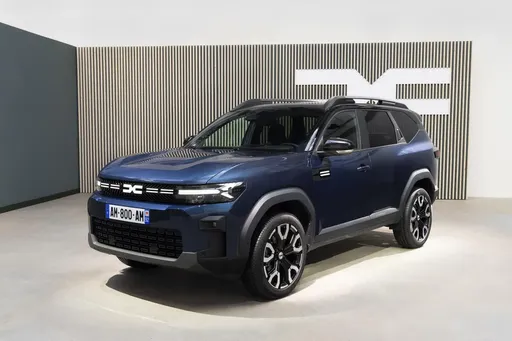 @ media.renault.at
@ media.renault.at
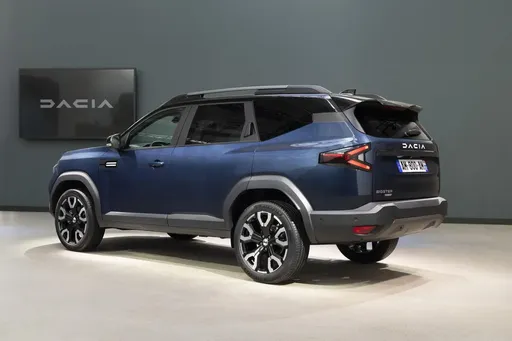 @ media.renault.at
@ media.renault.at
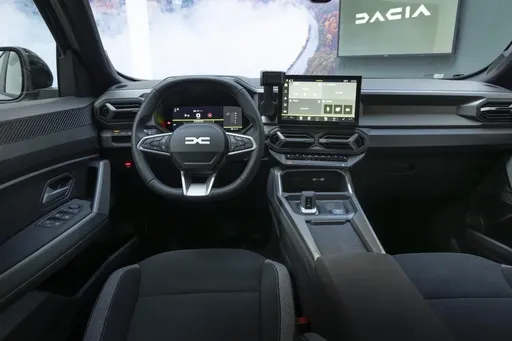 @ media.renault.at
@ media.renault.at
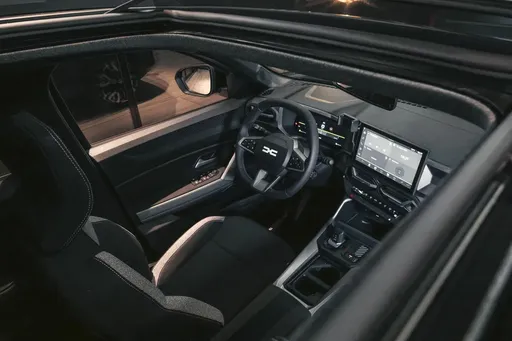 @ media.renault.at
@ media.renault.at
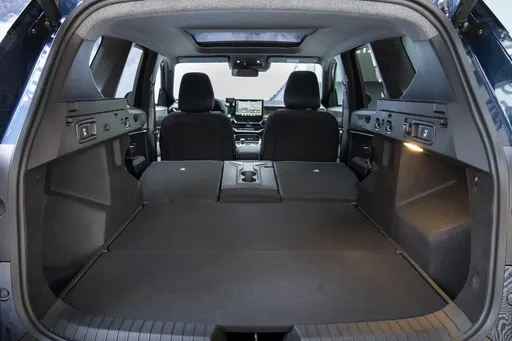 @ media.renault.at
@ media.renault.at

|
|
|
|
|
Costs and Consumption |
|
|---|---|
|
Price
16800 - 17100 £
|
Price
20600 - 26600 £
|
|
Consumption L/100km
5.10 L
|
Consumption L/100km
4.7 - 7.1 L
|
|
Consumption kWh/100km
-
|
Consumption kWh/100km
-
|
|
Electric Range
-
|
Electric Range
-
|
|
Battery Capacity
-
|
Battery Capacity
-
|
|
co2
133 g/km
|
co2
106 - 137 g/km
|
|
Fuel tank capacity
45 L
|
Fuel tank capacity
50 - 55 L
|
Dimensions and Body |
|
|---|---|
|
Body Type
Cargo Van
|
Body Type
SUV
|
|
Seats
2
|
Seats
5
|
|
Doors
3
|
Doors
5
|
|
Curb weight
1285 kg
|
Curb weight
1425 - 1547 kg
|
|
Trunk capacity
-
|
Trunk capacity
510 - 667 L
|
|
Length
3957 mm
|
Length
4570 mm
|
|
Width
1716 mm
|
Width
1813 mm
|
|
Height
1721 mm
|
Height
1705 mm
|
|
Payload
535 kg
|
Payload
383 - 467 kg
|
Engine and Performance |
|
|---|---|
|
Engine Type
Diesel
|
Engine Type
Petrol MHEV, Full Hybrid, LPG
|
|
Transmission
Manuel
|
Transmission
Manuel, Automatic
|
|
Transmission Detail
Manual Gearbox
|
Transmission Detail
Manual Gearbox, Automated Manual
|
|
Drive Type
Front-Wheel Drive
|
Drive Type
All-Wheel Drive, Front-Wheel Drive
|
|
Power HP
80 - 95 HP
|
Power HP
130 - 155 HP
|
|
Acceleration 0-100km/h
11.9 - 13.9 s
|
Acceleration 0-100km/h
9.7 - 11.2 s
|
|
Max Speed
162 - 167 km/h
|
Max Speed
180 km/h
|
|
Torque
190 - 200 Nm
|
Torque
230 Nm
|
|
Number of Cylinders
4
|
Number of Cylinders
3 - 4
|
|
Power kW
59 - 70 kW
|
Power kW
96 - 115 kW
|
|
Engine capacity
1248 cm3
|
Engine capacity
1199 - 1799 cm3
|
General |
|
|---|---|
|
Model Year
2016
|
Model Year
2025
|
|
CO2 Efficiency Class
D
|
CO2 Efficiency Class
E, D, C
|
|
Brand
Fiat
|
Brand
Dacia
|
Fiat Fiorino Qubo Van
Exploring the Versatile Fiat Fiorino Qubo: A Compact Transporter with Big Ambitions
The Fiat Fiorino Qubo is a compact driving solution, bridging the gap between city-friendly dimensions and the robust utility needed for business or personal transport. This article delves into the technical specifications and innovative features that set this diminutive workhorse apart in the realm of small transporters.
Engine Performance and Efficiency
At the heart of the Fiat Fiorino Qubo lies its dependable 1.3 Multijet 16V diesel engine, renowned for its balance between power and efficiency. With a power output ranging from 80 to 95 PS, this engine ensures a solid performance ideal for urban environments or longer commutes. Coupled with a manual transmission, the front-wheel-drive system provides a nimble and responsive experience.
The Fiorino Qubo's fuel efficiency is another standout feature, boasting a consumption rate of just 5.1 litres per 100km. This makes it a cost-effective choice for those mindful of both economy and environmental impact, with CO2 emissions rated at 133 g/km.
Innovative Design and Practical Dimensions
Despite its compact length of 3957 mm, the Fiat Fiorino Qubo maximises interior space while offering a thoughtfully designed exterior that navigates city streets with ease. With a width of 1716 mm and a height of 1721 mm, the vehicle strikes a harmonious balance, offering ample headroom and cargo space.
The innovative design includes a payload capacity of up to 535 kg and a clever interior layout optimised for storage and flexibility. This makes the Fiorino Qubo an excellent choice for small businesses or individuals needing a reliable transporter that does not compromise on versatility.
Driving Dynamics and Safety Features
The Fiat Fiorino Qubo ensures a secure and stable driving experience thanks to its robust build and intelligent design. Achieving a top speed between 162 and 167 km/h and accelerating from 0 to 100 km/h in 11.9 to 13.9 seconds, this vehicle is not only practical but also surprisingly swift for its class.
Safety is paramount, and the Fiorino Qubo offers a solid set of features designed to enhance both driver and passenger confidence. The impressive torque of 190 to 200 Nm and a refined chassis contribute to a stable ride under various loading conditions, ensuring peace of mind on the road.
Cost-Effective Ownership
With a price range between €19,576 and €19,992, the Fiat Fiorino Qubo represents great value for money. Its moderately low monthly running costs, estimated at €765 to €770 per month, and a cost per kilometre of 30.6 to 30.8 cents, make it an economical choice for those needing a small but capable transporter.
In conclusion, the Fiat Fiorino Qubo is a brilliant example of how modern engineering and smart design can deliver a small transporter that ticks all the boxes—efficiency, practicality, performance, and affordability. Whether for business or personal use, it's a compact utility vehicle that meets a variety of needs without stretching the budget.
Dacia Bigster
Introducing the Dacia Bigster: A Game Changer in the SUV Market
The Dacia Bigster is poised to redefine the landscape of compact SUVs with its striking design, innovative technologies, and a variety of powertrains that cater to a broad range of consumers. As the automotive world continues to shift towards sustainability without compromising performance, the Bigster stands out with its thoughtful engineering and modern features.
Striking Design and Practicality
From the moment you lay eyes on the Bigster, you can see that it was designed with purpose. Its robust silhouette, bold front fascia, and wide stance convey a sense of strength and stability. With dimensions of 4570 mm in length, 1813 mm in width, and standing 1705 mm tall, the Bigster offers a spacious cabin that comfortably accommodates five passengers. Coupled with a trunk capacity ranging from 546 to 667 liters, this SUV is as practical as it is stylish, making it perfect for both city driving and outdoor adventures.
Powerful and Efficient Engines
The Dacia Bigster offers a range of engine options designed to meet diverse consumer needs. The line-up includes two petrol MHEV variants: the TCe 130 and TCe 140, both available in front-wheel drive and all-wheel drive configurations. These engines not only deliver robust performance, with outputs between 130 and 140 HP, but also prioritize fuel efficiency, achieving consumption figures as low as 5.5 liters per 100 kilometers.
For those seeking an eco-friendlier option, the Bigster also features a Full Hybrid variant, the Hybrid 155, which offers an impressive 155 HP with a fuel efficiency rating of just 4.7 L/100 km. Additionally, the ECO-G 140 LPG variant allows for even more cost-effective driving without sacrificing power, catering especially to environmentally conscious consumers.
Innovative Technology Enhancements
The Dacia Bigster is equipped with an array of advanced technological features aimed at enhancing the driving experience. Its comprehensive infotainment system integrates a user-friendly interface with smartphone connectivity, ensuring that drivers can stay connected while on the road. Safety has also been prioritized, with features such as advanced driver assistance systems designed to keep both the driver and passengers secure.
Performance Meets Efficiency
Performance is a central theme in the Bigster's engineering. The SUV boasts a range of acceleration times, with the TCe 130 reaching 0-100 km/h in approximately 11.2 seconds and the TCe 140 doing so in a swift 9.8 seconds. The Hybrid model enhances this performance even further, offering a 0-100 km/h time of just 9.7 seconds. With a maximum speed of 180 km/h, the Bigster is not only capable but also thrilling to drive.
Comfort and Versatility
Inside, the Dacia Bigster emphasizes comfort and versatility with a roomy cabin that features high-quality materials and modern finishes. The SUV is designed with adjustable seating configurations and ample legroom, making it ideal for both daily commutes and longer journeys. It's also worth mentioning that the vehicle's curb weights range from 1425 kg to 1503 kg, optimized for performance and efficiency.
Conclusion: The Future of Driving with Dacia Bigster
The Dacia Bigster is more than just a new SUV; it represents a significant step forward in blending efficiency, performance, and practicality in an ever-evolving automotive landscape. With various engine options, advanced features, and a commitment to sustainability, it is clear that the Bigster is designed to meet the demands of modern drivers while appealing to a wide audience. Whether you are looking for a reliable city cruiser or a capable outdoor companion, the Dacia Bigster is set to deliver on all fronts.
Which drive types are available for the Fiat Fiorino Qubo Van?
Available as Front-Wheel Drive.
The prices and data displayed are estimates based on German list prices and may vary by country. This information is not legally binding.
